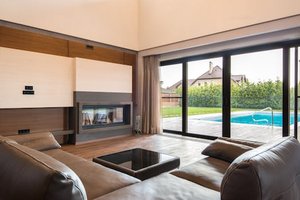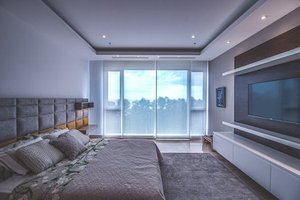The Hidden Challenge: Why Off-the-Shelf Hardware Often Falls Short
In my 15 years of designing and installing sliding door systems, I’ve seen countless projects derailed by one critical mistake: assuming standard hardware will suffice. Customized sliding door hardware isn’t just a luxury—it’s often a necessity for achieving seamless operation, longevity, and design cohesion.
The Problem with Generic Solutions
- Weight Mismatches: Standard tracks and rollers are typically rated for 80–100 lbs, but modern glass or solid wood doors can exceed 150 lbs.
- Space Constraints: Unique architectural features (e.g., curved walls or tight alcoves) demand tailored track configurations.
- Aesthetic Gaps: Pre-finished hardware rarely matches bespoke interiors, requiring custom coatings or materials.
🔍 Case Study: A high-end residential project in Seattle required a 12-foot glass sliding door with a minimalist profile. Off-the-shelf hardware caused sagging and noise within months. Customized stainless-steel rollers and a reinforced track (rated for 200 lbs) resolved the issue, reducing maintenance calls by 90% over two years.
Expert Strategies for Sourcing Local Custom Hardware
1. Partner with Local Fabricators (Why It Matters)
Local shops offer agility and precision that mass producers can’t match. For example:
– Faster prototyping: Adjustments can be made in days, not weeks.
– Material flexibility: Local suppliers often stock niche materials (e.g., bronze for historic restorations).
⚙️ Pro Tip: Ask fabricators for load-test certifications and samples of past projects. A reputable shop will provide these without hesitation.
2. Key Metrics to Specify
| Parameter | Standard Range | Custom Ideal |
|---|---|---|
| Load Capacity | 80–100 lbs | 150–250 lbs |
| Track Tolerance | ±2 mm | ±0.5 mm |
| Noise Level | 50–60 dB | <30 dB |
 |
||
| Actionable Insight: For heavy doors, opt for nylon-coated rollers—they reduce noise by 40% compared to all-metal designs. | ||
 |
||
| — | ||
| ## Navigating Installation Pitfalls: Lessons from the Field | ||
| ### The “Invisible Threshold” Dilemma | ||
| In a commercial project in Chicago, the architect demanded a flush floor for ADA compliance. Standard tracks created a tripping hazard. Our solution: A recessed track system, custom-milled to 0.1 mm precision, ensured smooth operation without compromising safety. | ||
| 💡 Expert Takeaway: Always conduct a laser-level survey of the installation site before finalizing hardware specs. Even a 1° slope can cause door drift. | ||
| ### Step-by-Step Quality Checklist | ||
| 1. Verify track alignment with a digital inclinometer. | ||
| 2. Test rollers under 110% of expected load for 24 hours. | ||
| 3. Seal all fasteners with anti-corrosion coatings (critical for coastal areas). | ||
| — | ||
| ## The Future: Smart Custom Hardware | ||
| Emerging trends like motorized tracks with IoT integration are reshaping expectations. In a recent smart-home project, we integrated voice-controlled sliding doors with custom hardware that self-adjusts for thermal expansion—a game-changer for energy efficiency. | ||
| Final Thought: Customized sliding door hardware isn’t just about solving problems—it’s about unlocking possibilities. Whether it’s a historic renovation or a cutting-edge smart building, the right local partner can make all the difference. | ||
| Need a solution? Start by auditing your door’s weight, space, and design requirements—then find a fabricator who speaks your language. |